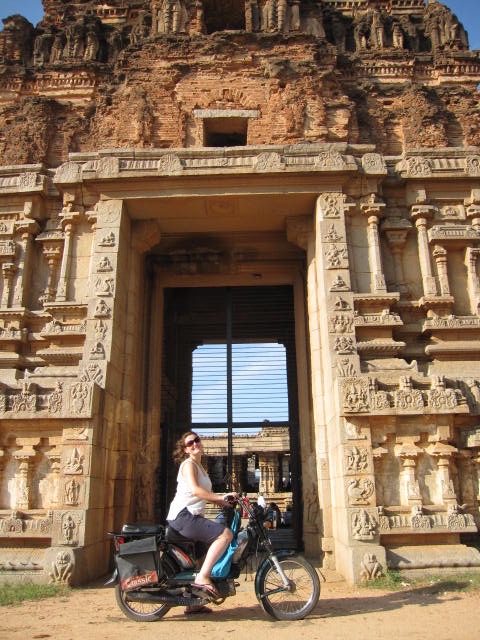Now that I have told my Mum about this I guess it is safe to blog. I have been riding a Scooter for a couple of months now and I absolutely love it! It is so much fun, gets me from A to B faster (and even faster if driven like an Indian upon the pavements) and saves my patience and bartering skills with the auto drivers. If any of you have read about, or seen, any of the Indian roads however you might not think this is ‘fun’ but rather an idiotic idea. However I can assure you, armed with a horn, I am safe and can report no accidents...as yet.
Last month I thought it would be a good idea to get an Indian Licence, mainly to avoid any hassle from local police. Even with paying an agent, this is much easier said than done.
So Saturday morning at 8am I find myself at the test centre. The centre is located on the second floor of an old, rundown, concrete shopping complex. You enter and pay 30Rs, the equivalent of about 42p, and are directed to a room where you are to sit and wait. This room has probably not been touched since it was constructed and so I imagine a lot of hot, sweaty, nervous people have sat and waited in it. The walls were crumbling, the white paint was now a brownish-black colour and darker around the area where patient people had sat. The fans no longer worked and the windows were bored up; not a pleasant place to spend a Saturday morning.
In the corner of the room behind the frosted glass was what sounded like a computer-simulated driving game; I can only assume this was for practising on but scarily it might be used for the actual driving test. At that moment in time, it felt as if I was a week of waiting away from the simulated driving game.
After about 30minutes sitting on a small wooden bench in this room with an audience of small Indian boys, I was asked to proceed into the next room. This time I stood in a queue of about twenty Indians studiously staring at a wall painted with traffic signs showing hazards such as cows and men pulling carts. I was spotted and called to the front of the queue. I now stood in the doorway of the office which appeared to belong to the man with the ‘approved’ stamp. I stood there for a while in front of the other twenty Indians who were wondering why I was now at the doorway when they had been queuing all morning. Soon I was called into the office where an official-looking man was sitting behind a large desk surrounded by a sea of forms and paperwork. On the walls were images of Gods with Jasmine swung around then.
As I started speaking to him I felt my chances of success drifting away. Nothing is easy in India but you usually just fill out lots of forms and get somewhere by the end of the day. Today was different, today was a direct no, this hasn’t happened before and so I was a little shocked. I left the room and went to find the agent. He didn’t understand why I was declined. Were my driving skills so bad he knew just by looking at me? The agent took me outside. Standing surrounded by a load of sweaty Indian men he asked for my number, which I wrote on the paper he was holding. He told me he would try when there were fewer people around and so I said all that was left, that I had more money if required, and quickly got out of there. I didn’t hear from him again...but I did get my money back.
















